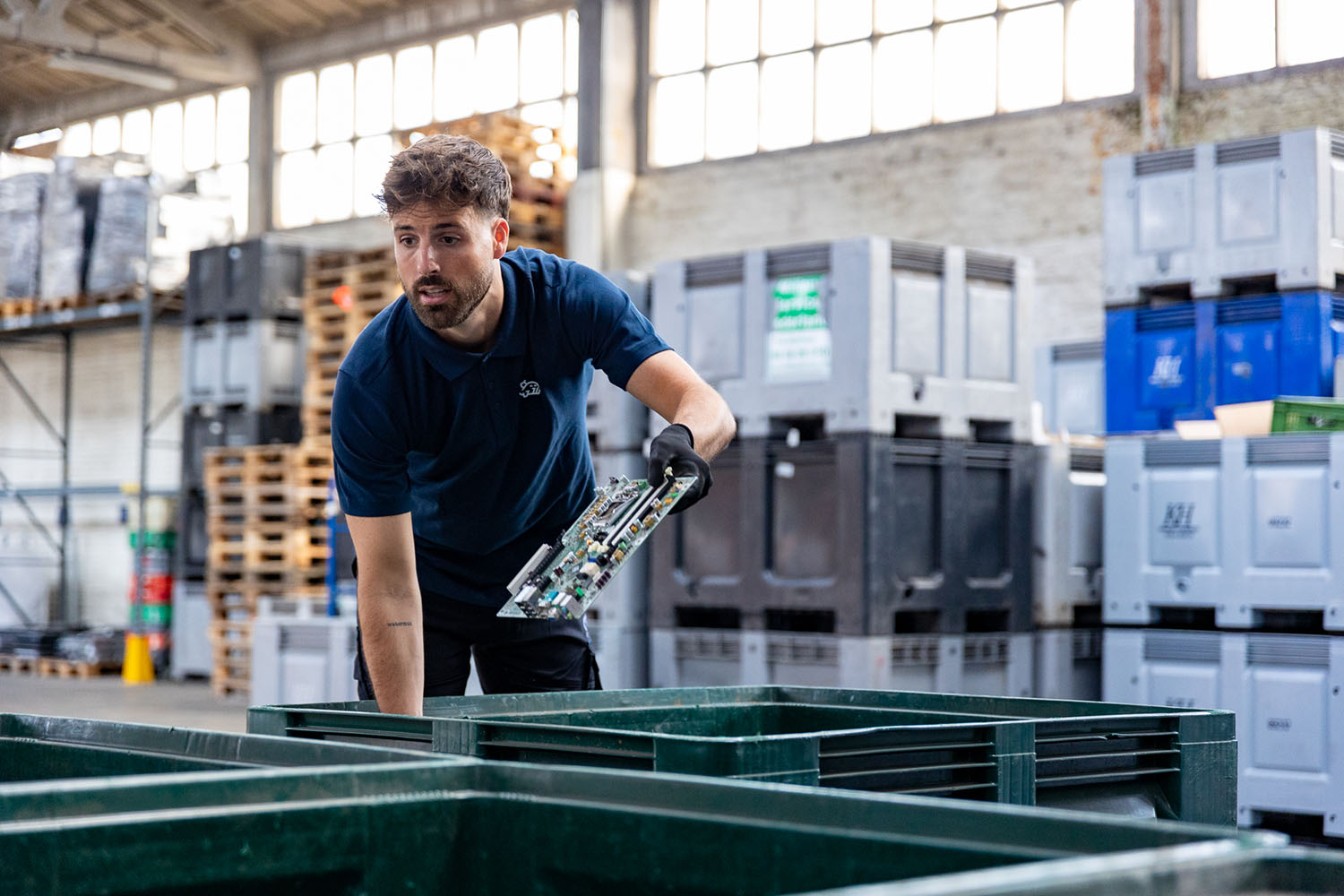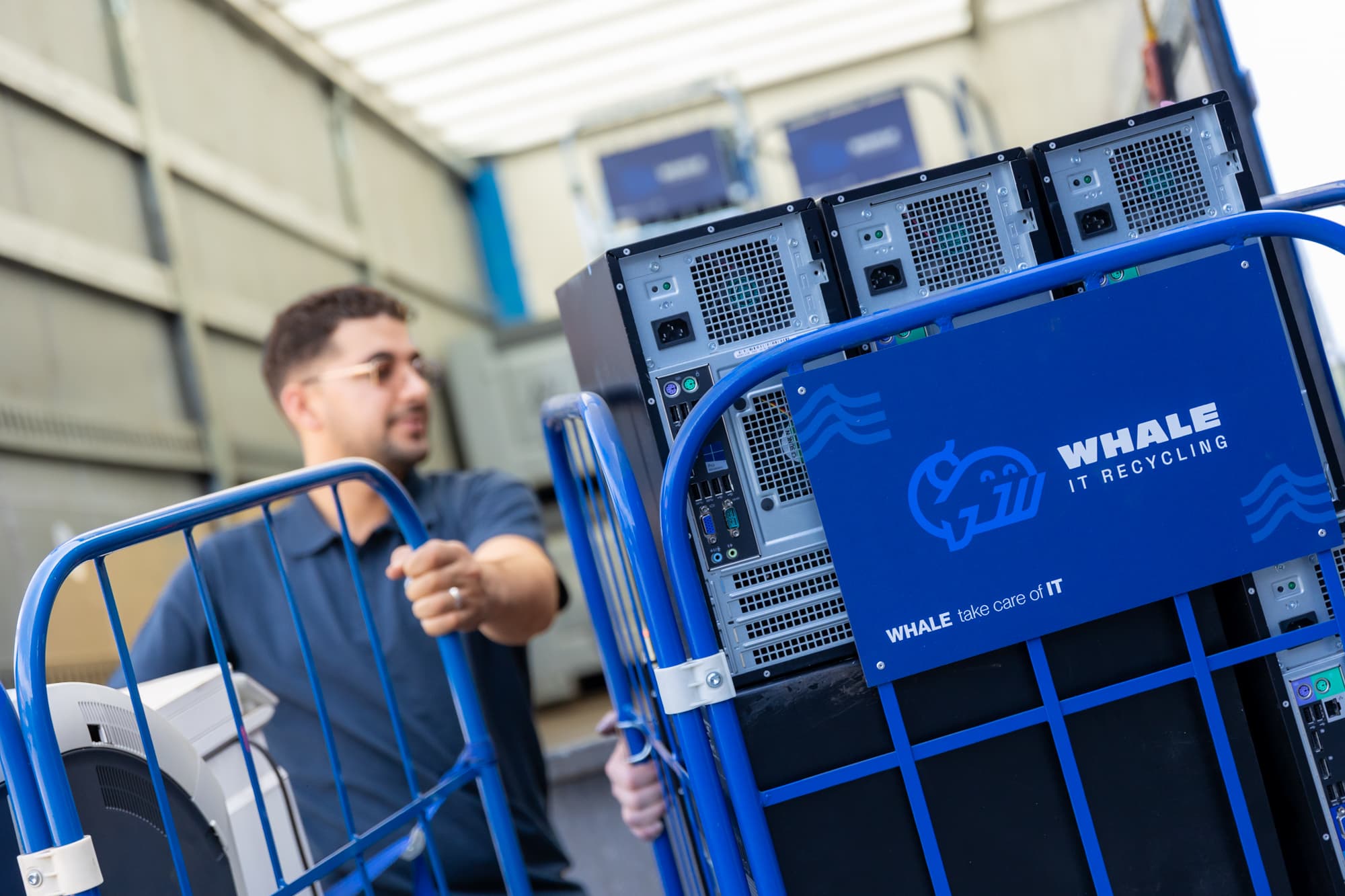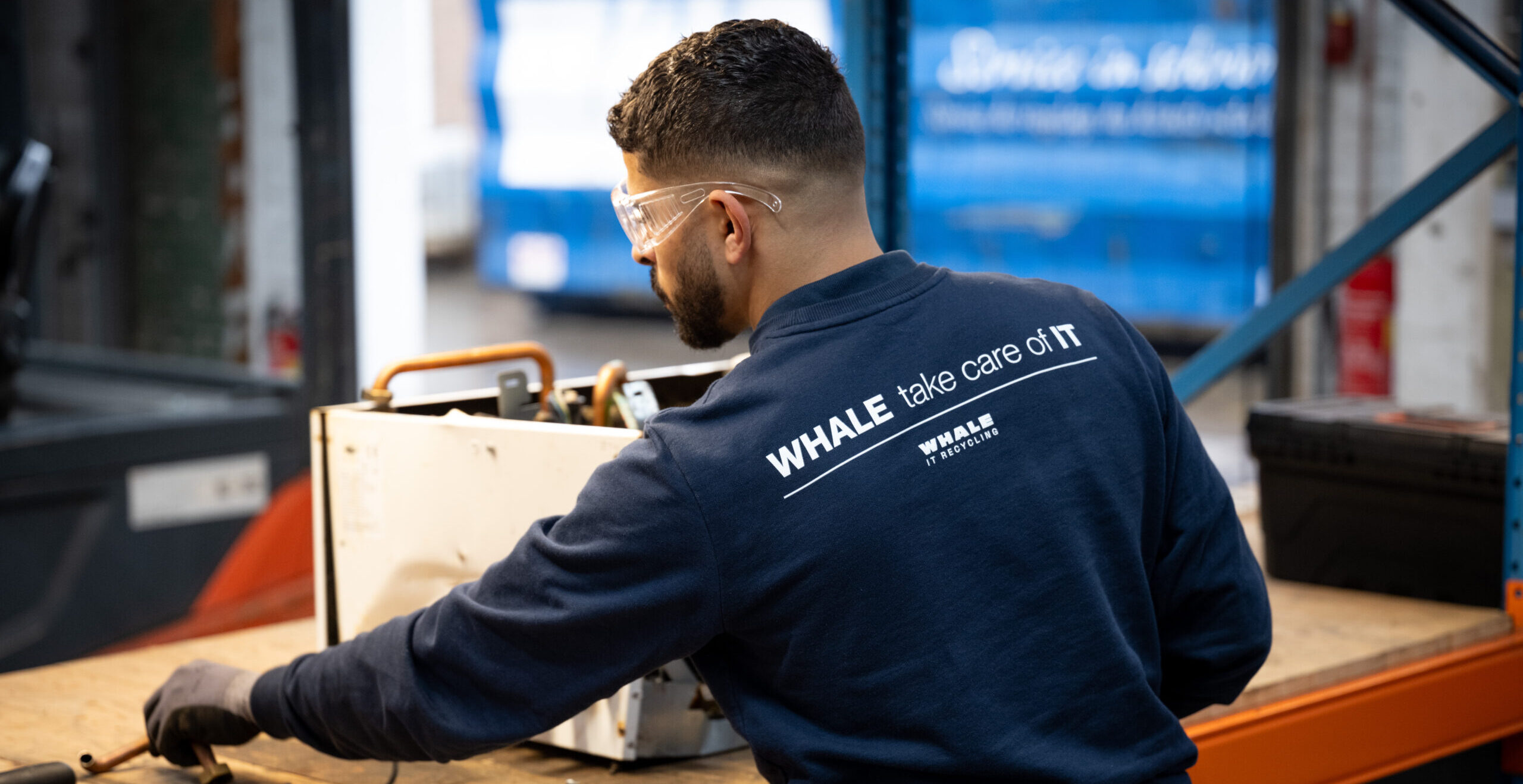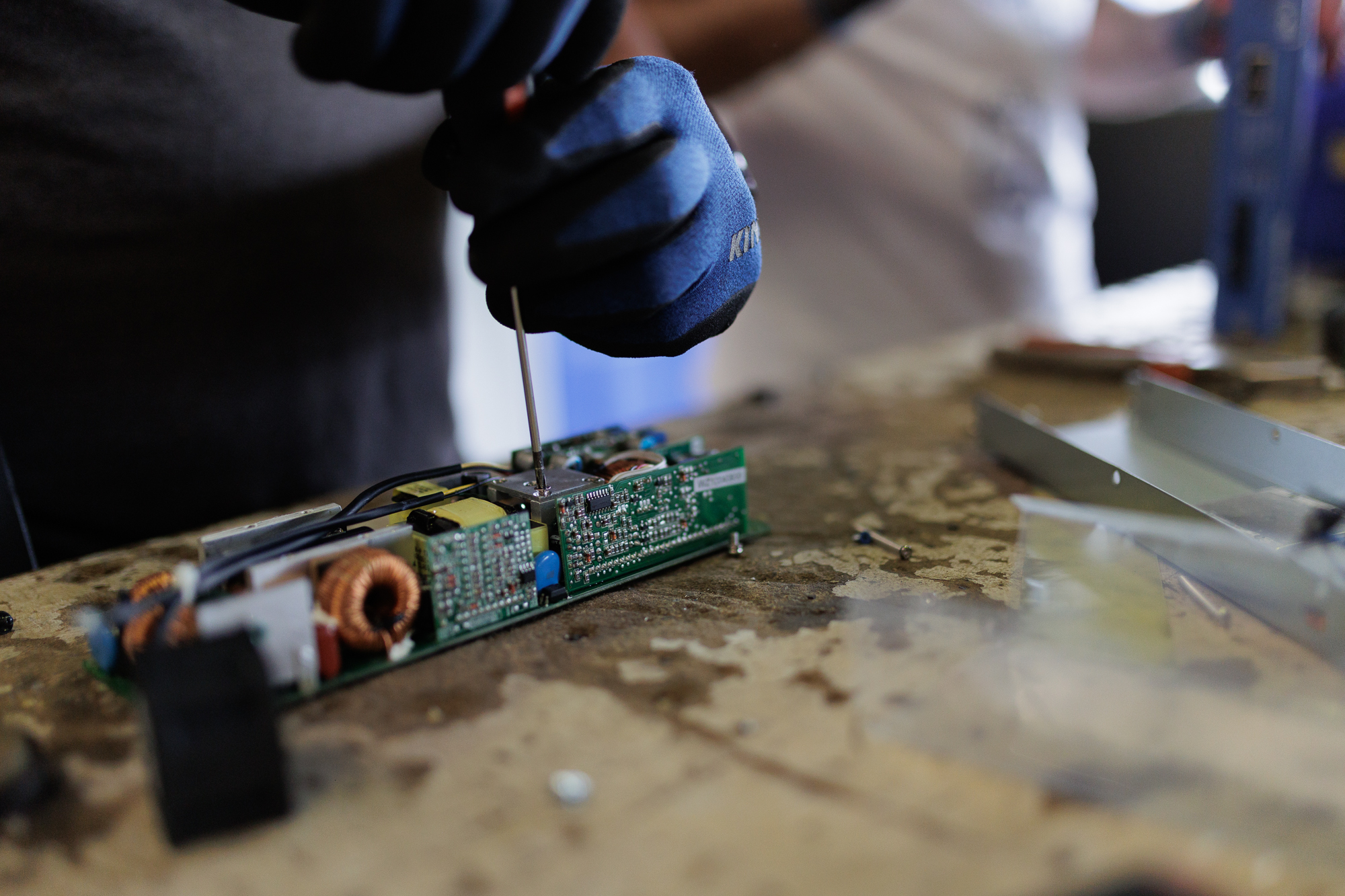Server recycling
WEEELABEX-certified recycling of old servers with high recycling percentages. Can be combined with certified data destruction.

Safe data destruction as top priority
When recycling servers, data security is crucial. We use two certified methods for data destruction. The first method is shredding, where we physically shred data carriers into very small particles. With today’s technology, it is completely impossible to recover any data. The second method we apply is certified data wiping or data erasing. Depending on the type of hard drive, a strict protocol is applied where the data is overwritten in a specific way, making it 100% irretrievable. For companies seeking extra assurance, we also offer the option to wipe data on-site before transporting the servers.
Laws and regulations
We work according to the strictest standards and hold various certifications, such as the WEEELABEX certificate (Waste Electrical and Electronic Equipment Label of Excellence). This certification, mandatory for electronics processors since 2015, guarantees high-quality recycling with attention to the environment, labor safety, and optimal recovery of materials. Our processes also comply with all requirements of the GDPR and other relevant legislation regarding data security and privacy protection.


Focus on server reusability
At Whale Recycling, we follow a clear hierarchy in our server processing. Our first priority is product reuse, where we investigate whether the entire server can have a second life. If this is not possible, we look at reusable components such as memory modules, processors, and power supplies. These components can often still be used in other systems. Only when reuse is no longer an option do we dismantle the servers for material recycling.

What is inside a server?
A server contains various valuable components that Whale IT carefully processes. A server primarily contains hard drives for data storage, memory modules (RAM), processors (CPUs), and power supplies. Additionally, a server has circuit boards with high-quality materials such as gold, silver, palladium, and platinum. For safety, servers are equipped with batteries, ranging from lithium button cells to nickel-metal hydride batteries. In older servers, we may still find lead in the solder joints of the circuit boards, although this is no longer allowed in newer servers under the ROHS directive for imports into the EU. When dismantling servers, we take all these different components into account to ensure they are processed or reused correctly.
Environmentally friendly processing
Our manual dismantling of servers plays a vital role in reducing e-waste and recovering valuable raw materials. Servers contain materials such as aluminum, copper, and precious metals, as well as potentially harmful substances like lead in older soldering and various types of batteries. Through our careful dismantling, these materials can be processed separately, resulting in clean material streams. These raw materials can then be used in the production of new products, reducing reliance on primary raw materials. We work with specialized end-processors who handle the different material streams in the most environmentally friendly way. We aim for the shortest possible recycling chain to maximize efficiency and minimize environmental impact.
Social impact
In addition to our technical expertise, we stand out through social engagement. We work with people who are distanced from the labor market, offering them a chance to reintegrate into society. This approach not only gives servers and materials a second life, but also provides people with new opportunities in the job market. Recycling servers at Whale Recycling offers organizations a complete, secure, and sustainable solution.
From large data centers to smaller server rooms, we ensure professional processing with data security and environmental impact at the forefront. Organizations can also choose to donate a portion of the proceeds to the Sophia Children’s Hospital in Rotterdam, directly contributing to the development of health technologies and making the hospital more child-friendly.